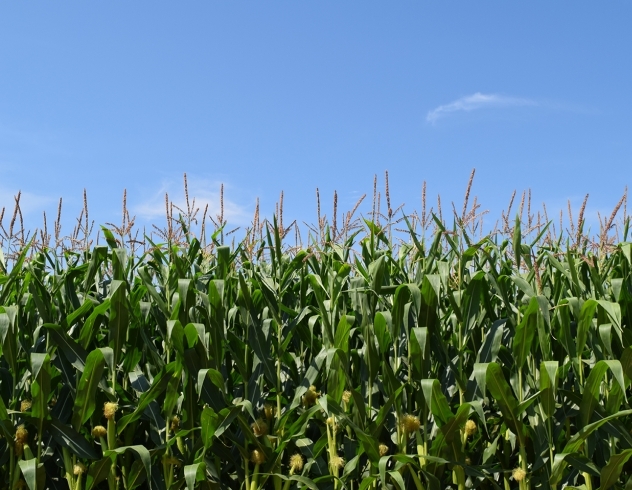News & Events

Crop Corner- On the Lookout for WBC in Haldimand and Niagara
July 06, 2017

July and August is an ideal time to walk corn fields looking for Western bean cutworm (WBC), a pest that has emerged in recent years as a threat to corn crops in Haldimand and Niagara. WBC larvae feed on the silk, pollen and cob tip, and can be found buried in the corn ear late into the fall. Yield losses due to WBC can be over 15bu/ac, and perhaps even worse is that WBC creates holes in corn cobs which allow fungus to enter the cob and leads to high levels of mycotoxins making corn difficult to market.
Western Bean Cutworm complete one generation per year in Ontario, beginning as pupae that emerge from the soil and turn into egg-laying moths. These moths lay eggs in corn fields before tassel, and the newly hatched larva feed on tassel and pollen tissue. After they have consumed tassel and pollen tissue, they move down to the corn ears where they complete their cycle before dropping to the ground to burrow in the fall.
This season we have set up a series of pheromone traps to monitor levels of adult egg-laying moths present in the area. We use these traps to detect peak flight as the peak egg laying period typically follows shortly after peak flight. Egg laying can occur anytime in Ontario from mid-June to the end of August, however peak flight typically occurs mid to late July. Fields that were planted late, or with variable crop stages and heights are ideal for prolonged egg laying in the field and therefore highest risk for damage. The adult moths are attracted to fields in the late whorl and early tassel stage, once the plants are in the pollination stage, moths will move on and search for later planted corn fields.
With the wet spring this season, corn fields were planted late or even replanted. This means there is a high potential for uneven corn stands that may attract moths, or late planted fields that may pollinate in mid-late July which would coincide with the peak moth flight. In 2016 there were a number of fields in Haldimand and Niagara that were found to have WBC damage. Scouting for WBC egg masses should begin 1-2 weeks before tassel. Eggs are laid in groups of 5-200 on the upper surface of the leaf and near the top of the corn plant. Eggs are pearly white and about the size of a pin head. Newly hatched WBC are brown with a dark head. Later into August, look for signs of clipped silks and holes in cobs to determine if WBC is residing in your fields. Insecticide sprays are warranted if 5% of plants have egg masses or small larva present.
Call your Clark Agri Service Agronomist today if you require assistance scouting your corn crop or would like an update on our current WBC trap counts for Haldimand and Niagara.

This Crop Corner has been written by Melody Robinson, Field Agronomist at Clark Agri Service. Melody can be reached by email mrobinson@clarkagriservice.com or by phone 289-775-1188